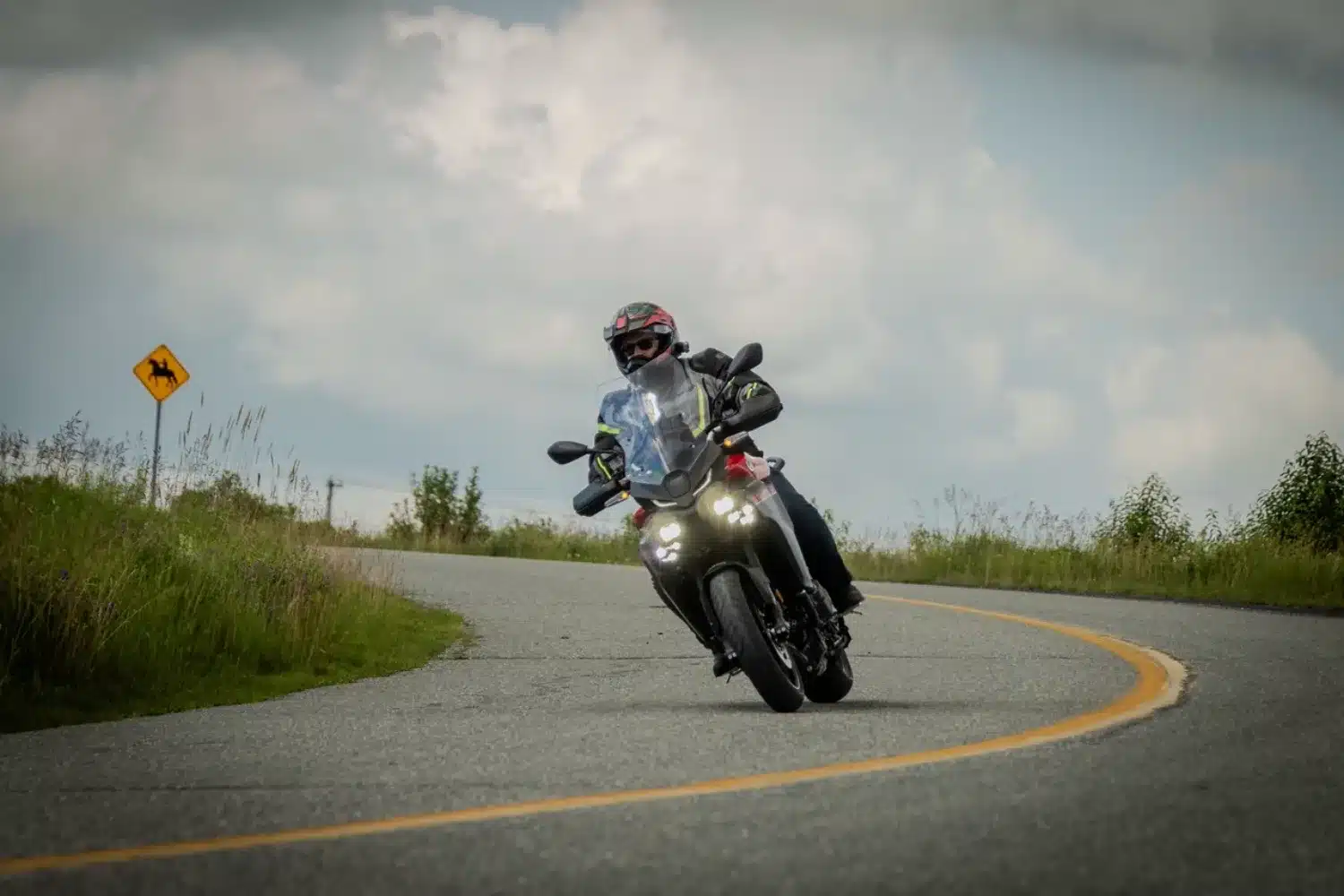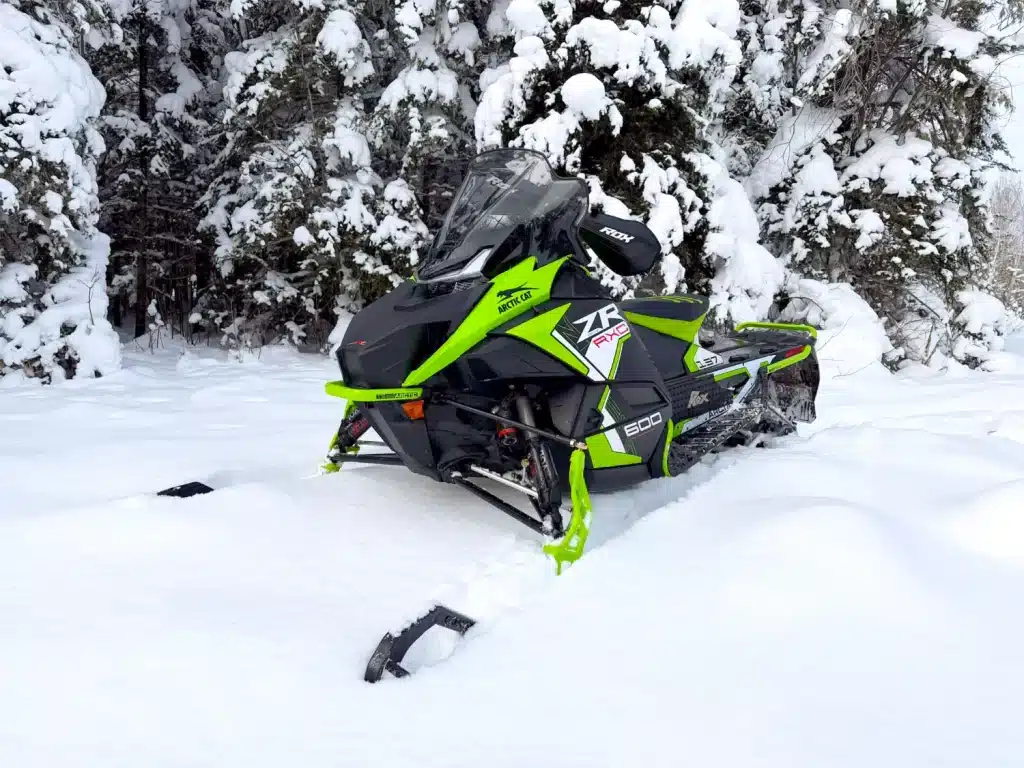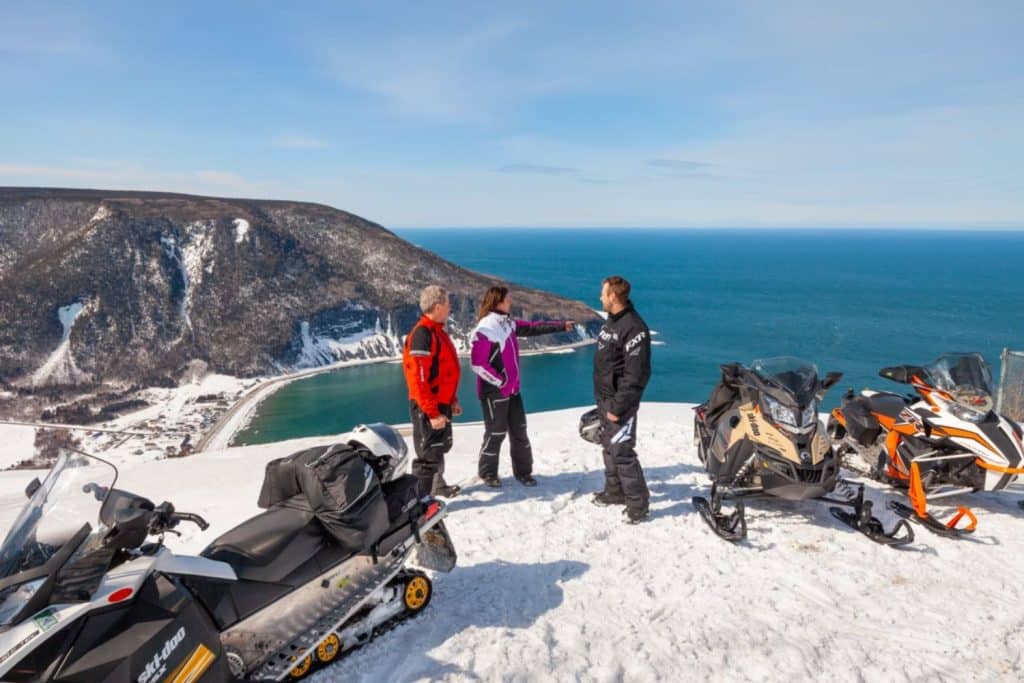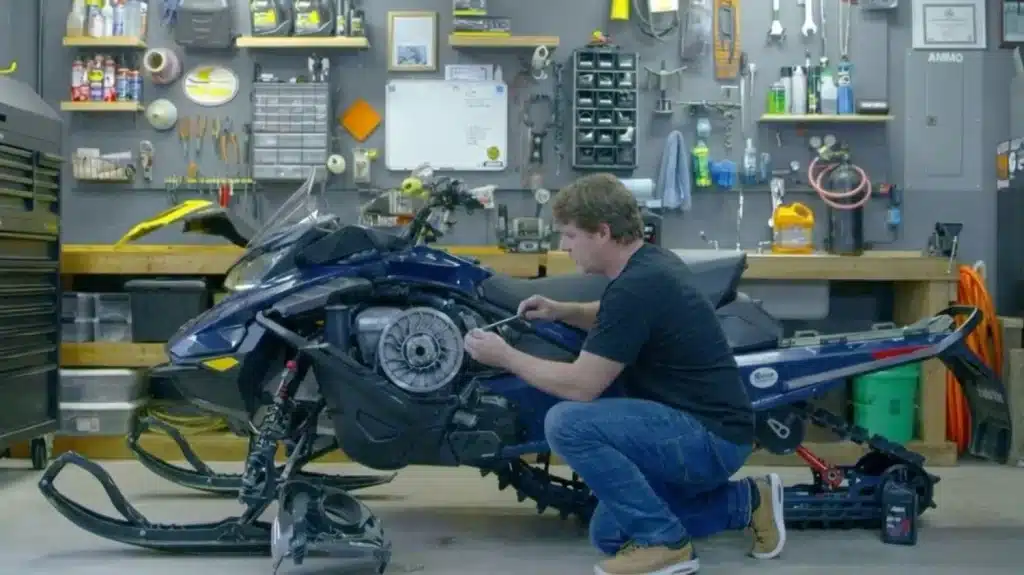Some mornings, you get up, look outside, see a clear sky and say to yourself, “Today’s a motorcycle day.” When you’ve got a Yamaha Tracer 9 Y-AMT in the garage, there’s a good chance you’ll set off without knowing where you’re going, but you’ll be in no hurry to get there. For 2025, Yamaha returns with a revised version of its sport-touring tourer that has won over many since its arrival in 2021. But this time, there are no big, flashy new features… on the contrary. We’ve even taken out a bit of the glitz. So, is this a step backwards or a sensible decision? Let’s saddle up and find out.
AMT: a gentle revolution for long-distance riders
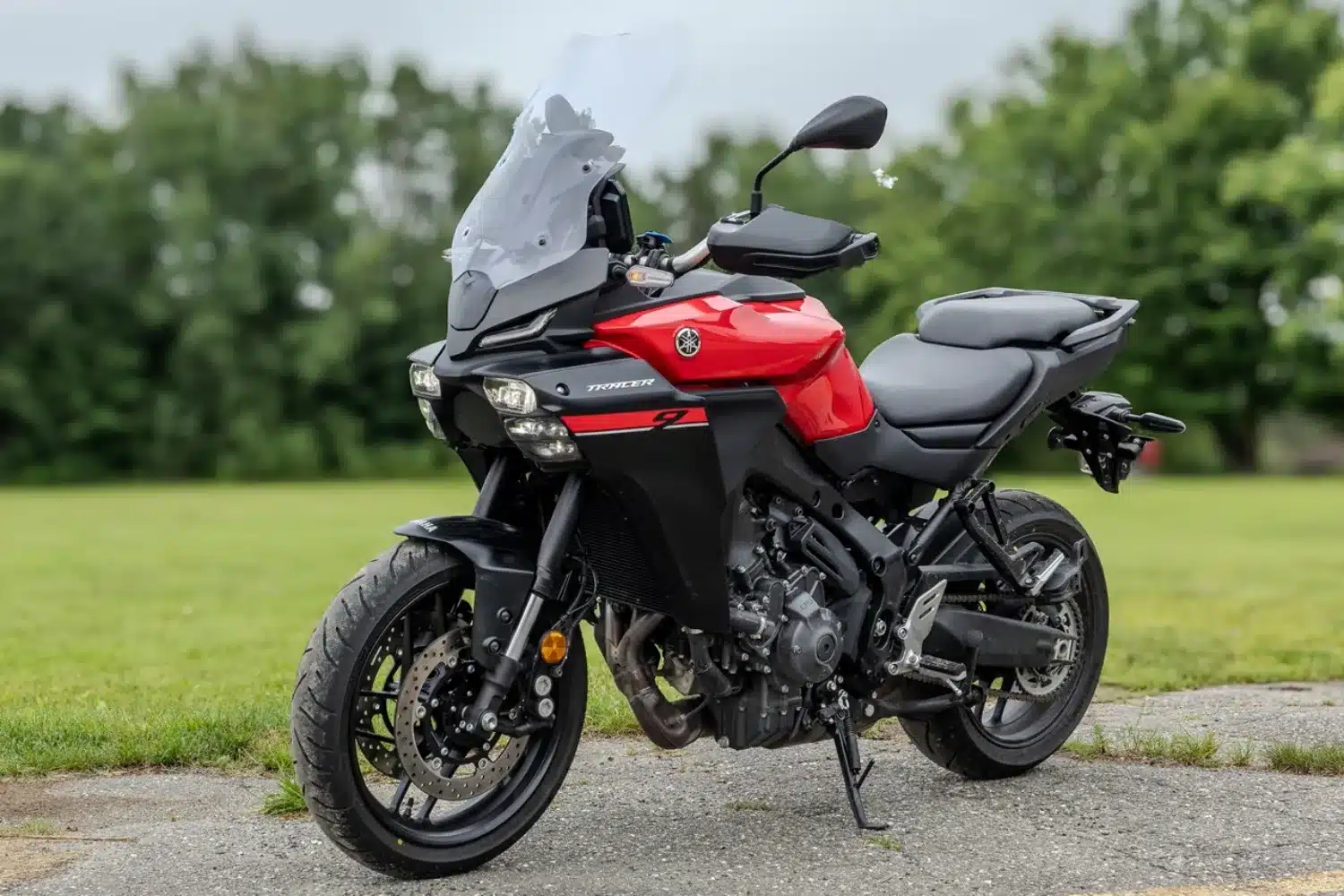
Let’s start with the biggest new feature: the famous AMT (Automated Manual Transmission). Basically, it’s a manual transmission… managed electronically. There’s no clutch, but the gears are still there, with six speeds. And the best part? You can leave it in automatic mode, or change gears manually using the buttons on the left handlebar.
In auto mode, the bike does all the work: it starts off smoothly, downshifts intelligently as you approach curves, and upshifts smoothly. The system is intelligent, responsive and, above all, ultra-smooth. You soon forget you don’t have to use your left foot.
And in manual mode? It’s just as much fun. Gear changes are made with + and – buttons on the thumb and forefinger. A bit like a video game… but now you’re on Route 132 in Matane, and there’s wind in your helmet.
For long rides, the comfort of never having to manage the clutch in traffic or technical turns is a big plus. Let’s face it: for old knees or tired wrists, it’s a godsend.
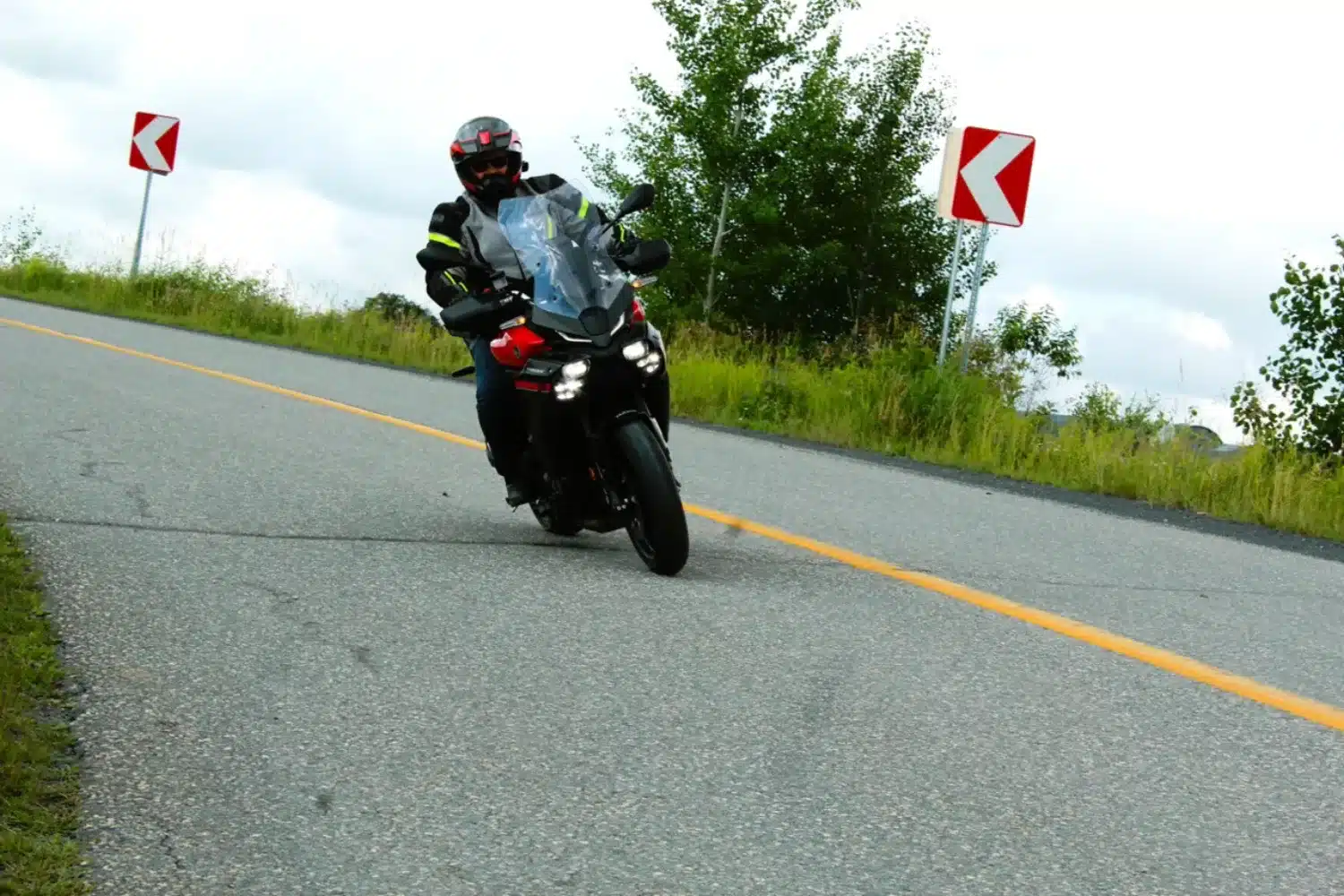
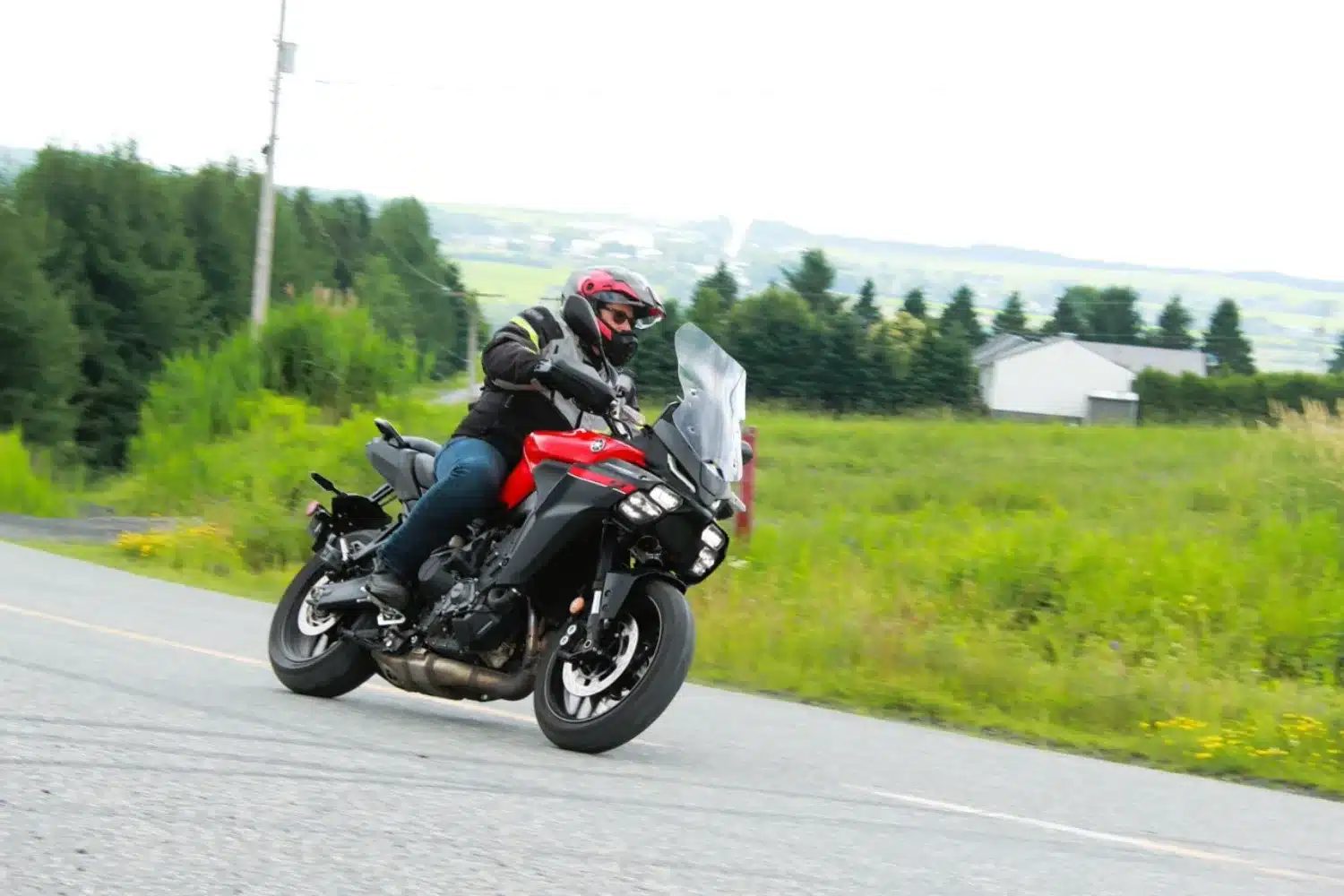
What’s changed (or rather, disappeared)?
Well, before we get into the pleasure of the road, let’s talk about the elephant that’s no longer in the room: the 2025 Tracer 9 Y-AMT loses its radar. That’s right, the front radar that controlled the adaptive cruise control. Gone is the discreet electronic eye that kept an eye on the car in front while you imagined yourself already in the Alps (or on little road in Saint-Arsène).
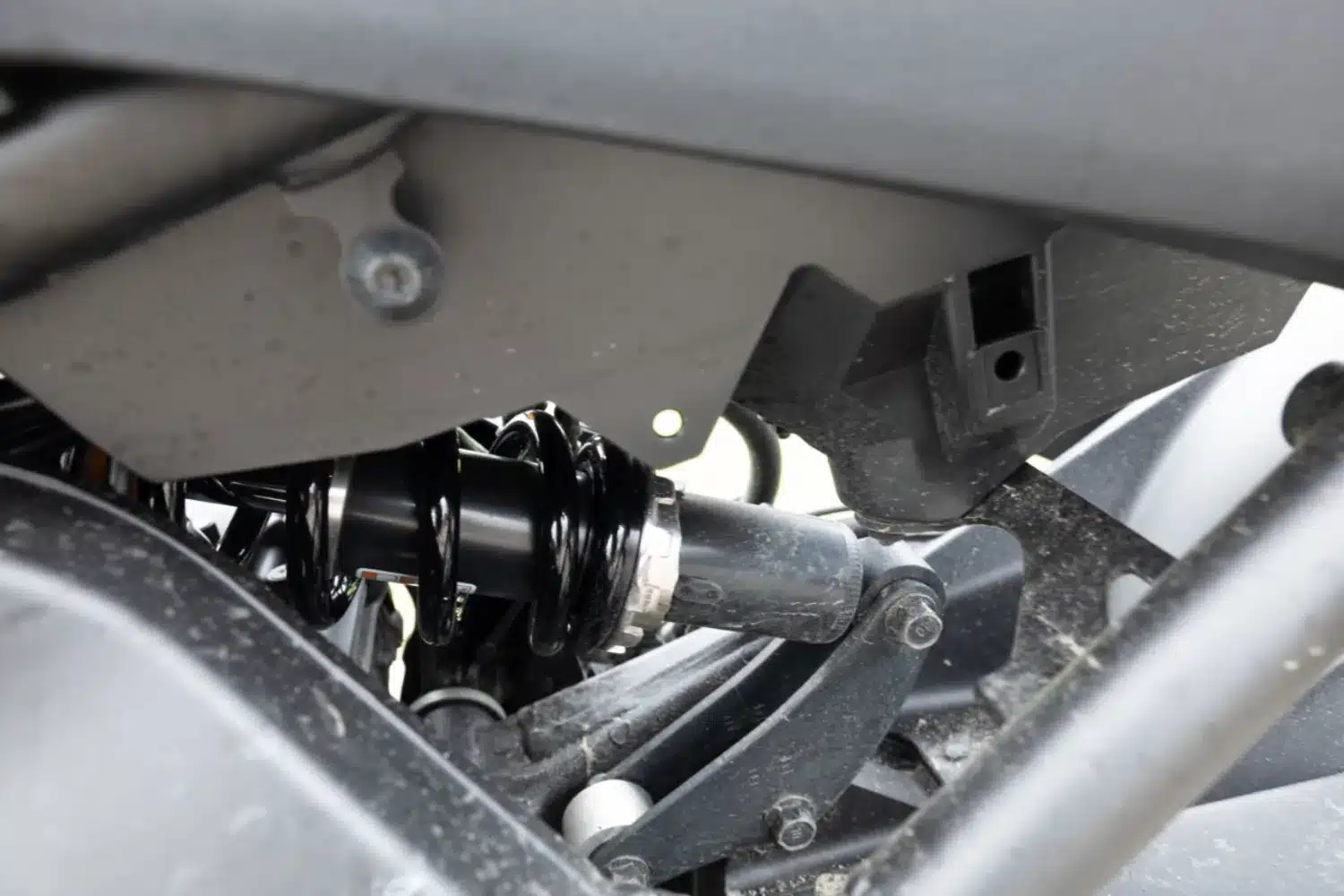
Yamaha has also removed the semi-active suspension. Many won’t realize the change, but for spring pros, it’s a minus, but one that considerably reduces the price. Gone are the electronics that manage the suspension. Now you’ll have to get out your little magic wrench to adjust the rear shock’s big spring.
Some will bemoan these gadgets. Others will say: “Good riddance! I didn’t come on this bike to have the computer do everything for me! To each his own, but one thing’s for sure: the heart of the Tracer remains intact.
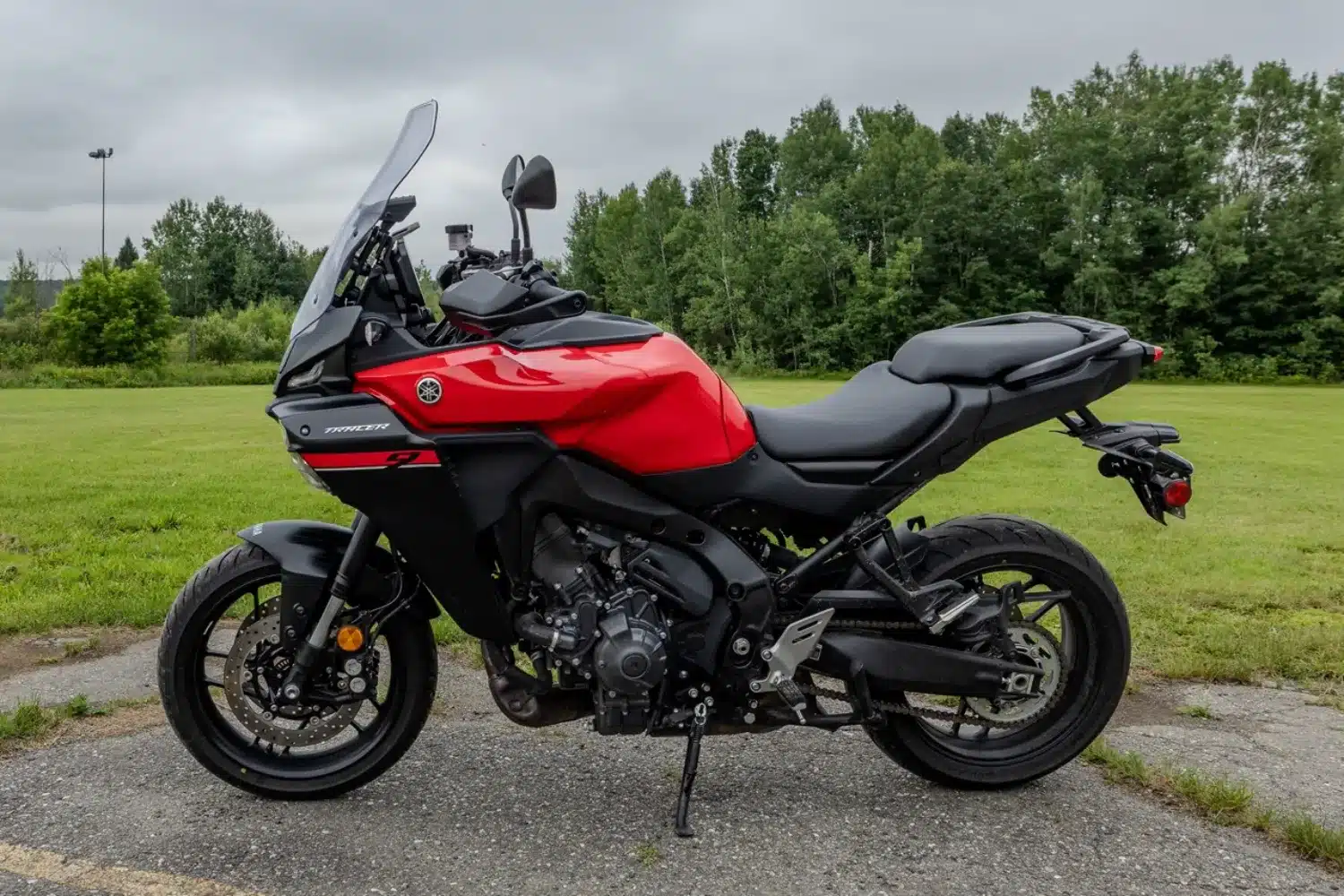
The CP3 engine: still going strong
Yamaha hasn’t touched its fantastic 890 cm³ CP3 in-line 3-cylinder engine. Honestly, so much the better. This mill is a real gem. Supple at low revs, responsive when you turn the handle, with a throaty sound that makes you smile through your helmet, even through the Queen song playing in your headphones. It still develops 119 horsepower, and that’s more than enough to pass a line of caravans on the 132 road at Gaspé without having to recite your will.
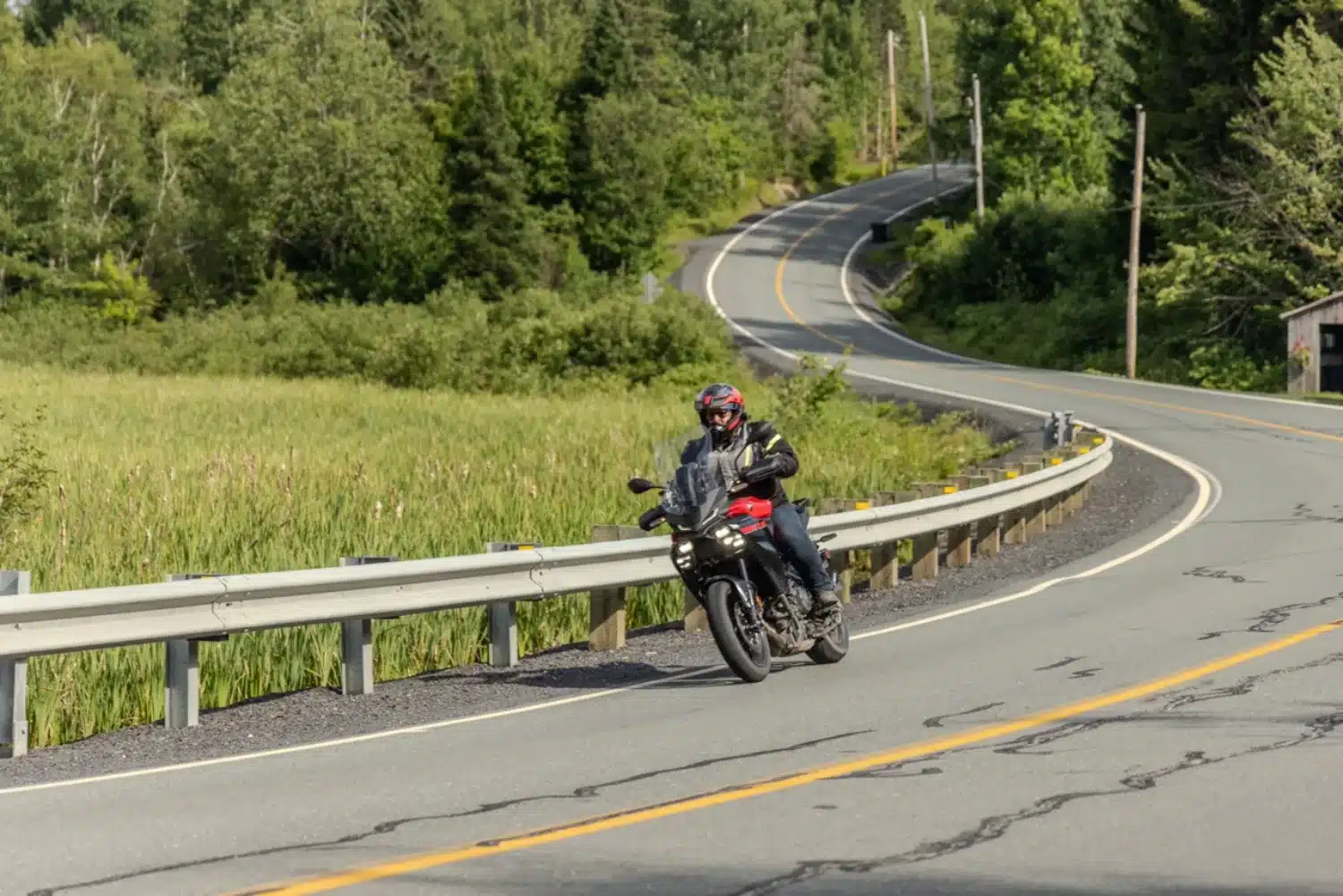
Comfort and ergonomics: right on target.
The riding position is upright, natural, and allows you to spend several hours in the saddle without needing a chiropractor on arrival. The saddle is just the right amount of softness, the footrests are well positioned, and the adjustable windshield provides adequate protection without blowing the wind across your face like a cod tail. Incidentally, the windshield has been redesigned in a more rounded fashion to remove the sharp, zigzag-cut corners.
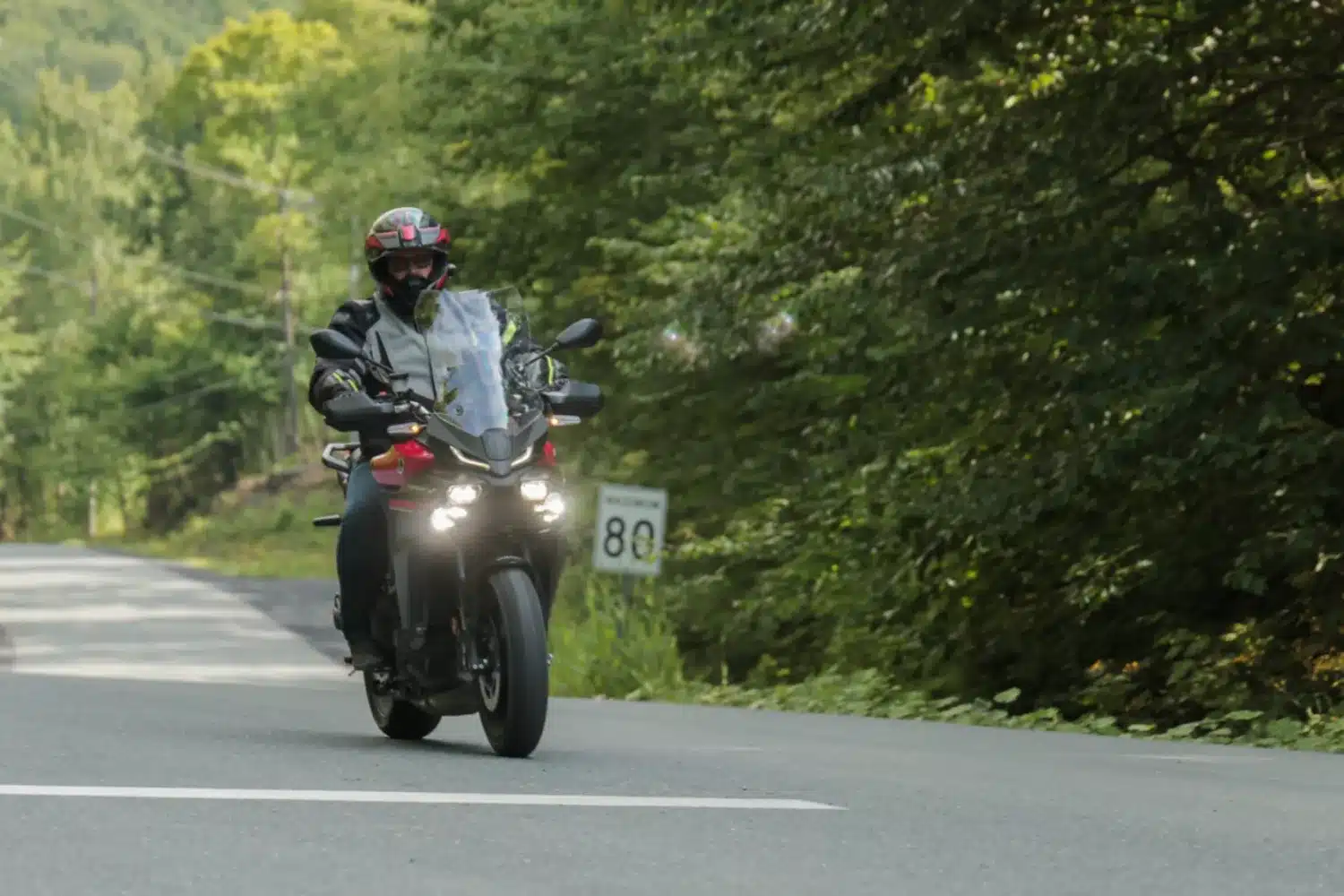
The Tracer 9 GT also offers heated grips (always welcome on chilly October mornings in Quebec), well-integrated hard side cases (enough for a short week’s jaunt), and a 7-inch color TFT instrument panel, operated via the handlebars.
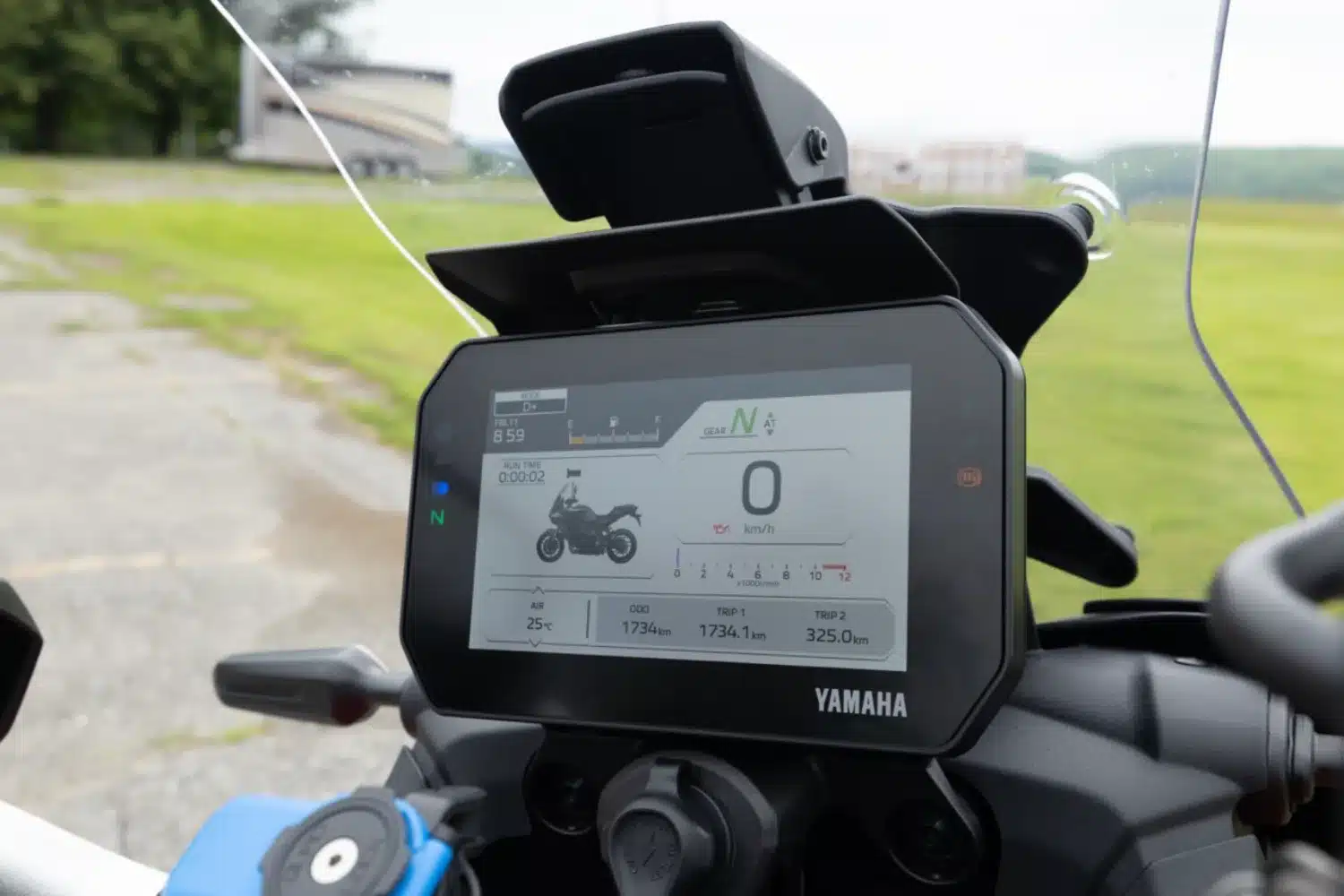
FTF 7-inch screen
The road, pleasure, versatility
What really sets the Tracer 9 GT apart is its perfect balance between sport and touring. It can be as gentle as a lamb when you’re cruising along Grande Allée in Quebec City, and then become a real asphalt tigress as soon as you hit the winding roads of the Bas-Saint-Laurent.
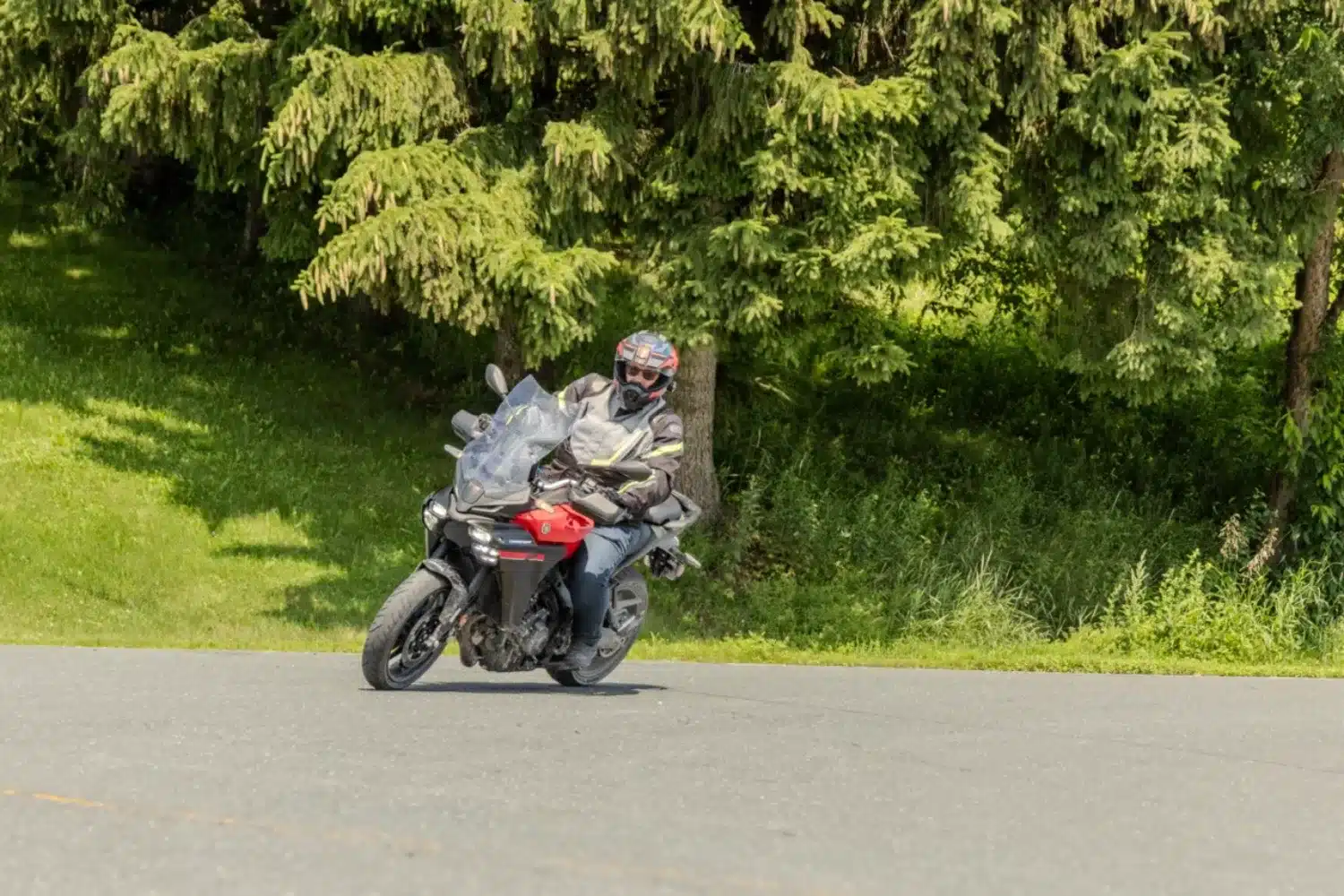
Steering is precise, the bike is light (224 kg all up), and the low center of gravity makes it easy to maneuver at low speeds. Once underway, it’s stable, reassuring and always ready to have fun.

Electronic assistance: still very much present
Even with the radar removed, the 2025 Tracer 9 GT is still well equipped on the electronics side. You’ll find :
- Configurable traction control,
- Anti-wheeling (useful when the CP3 wants to lift a leg),
- ABS braking system for cornering,
- Customizable driving modes (Sport, Street, Rain and two custom modes).
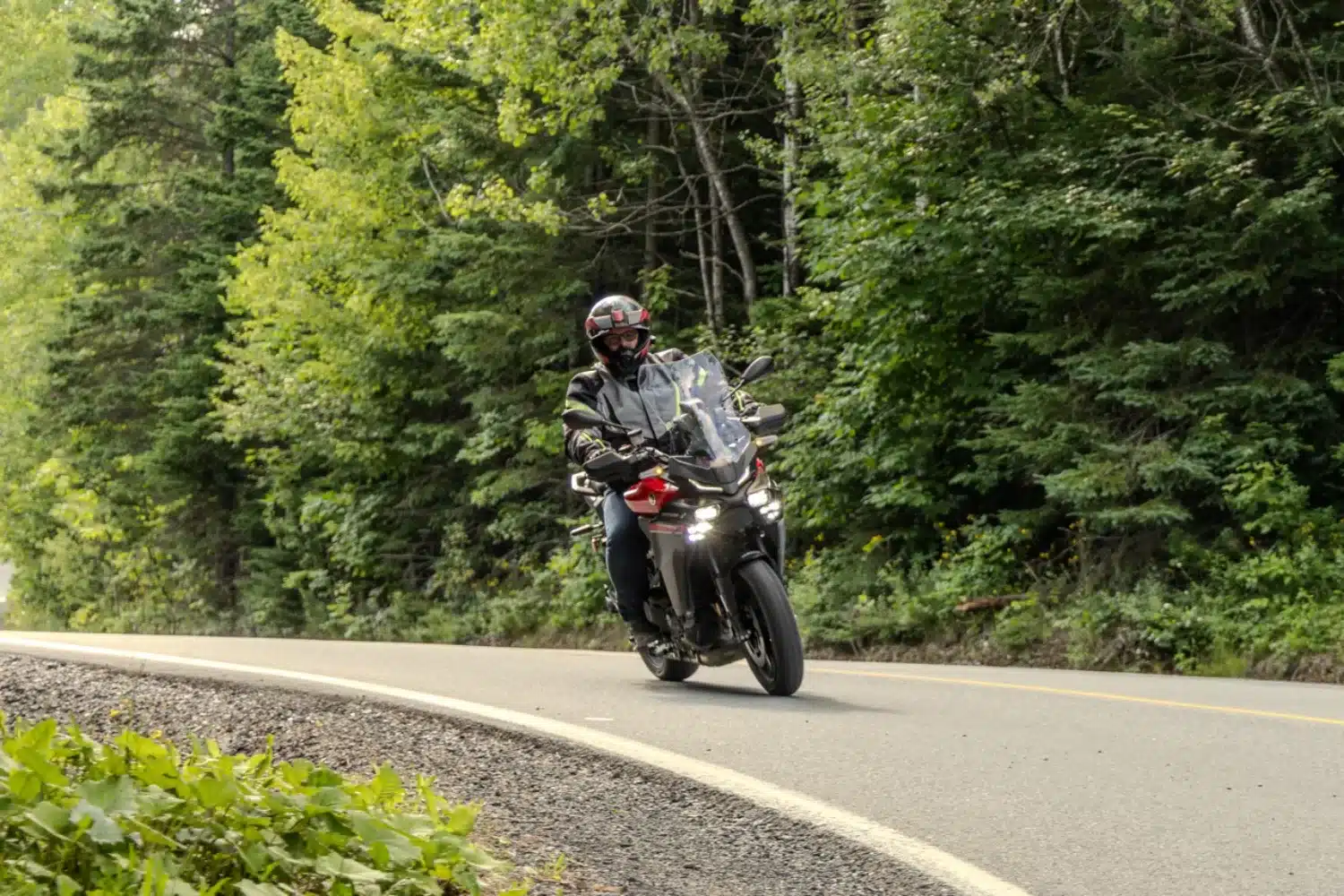
In short, you’ve still got an electronic brain to make sure your ride doesn’t turn into a stunt, even when you’re pushing a bit in the curves of Parc de la Gaspésie.
How serious is the removal of radar, Doctor?
That’s a good question. For some, it’s a step backwards. For others, it’s a return to basics. By removing the expensive sensors and assistants, Yamaha probably wanted to bring the price of the Tracer Y-AMT down to a more accessible level without compromising riding pleasure.
Let’s face it, most riders who choose a Tracer 9 Y-AMT do so for its versatility, engine and comfort. Adaptive cruise control is the kind of thing you’d use on the highway, but which annoys you more often than anything else on nice winding roads.

Verdict: less techno, but still just as much fun!
The 2025 Yamaha Tracer 9 Y-AMT is a sort of return to basics. Less sophisticated electronics, more raw fun. It retains everything that made previous versions so successful: the CP3 engine, KYB suspension, long-distance comfort and the agility of an alley cat.
It may no longer have the radar of the future, but it still has everything you need to hit the road, from the Saguenay to the ends of the earth.
As we say back home: it‘ s not the radar that makes the rider, it’s the wrist twist.
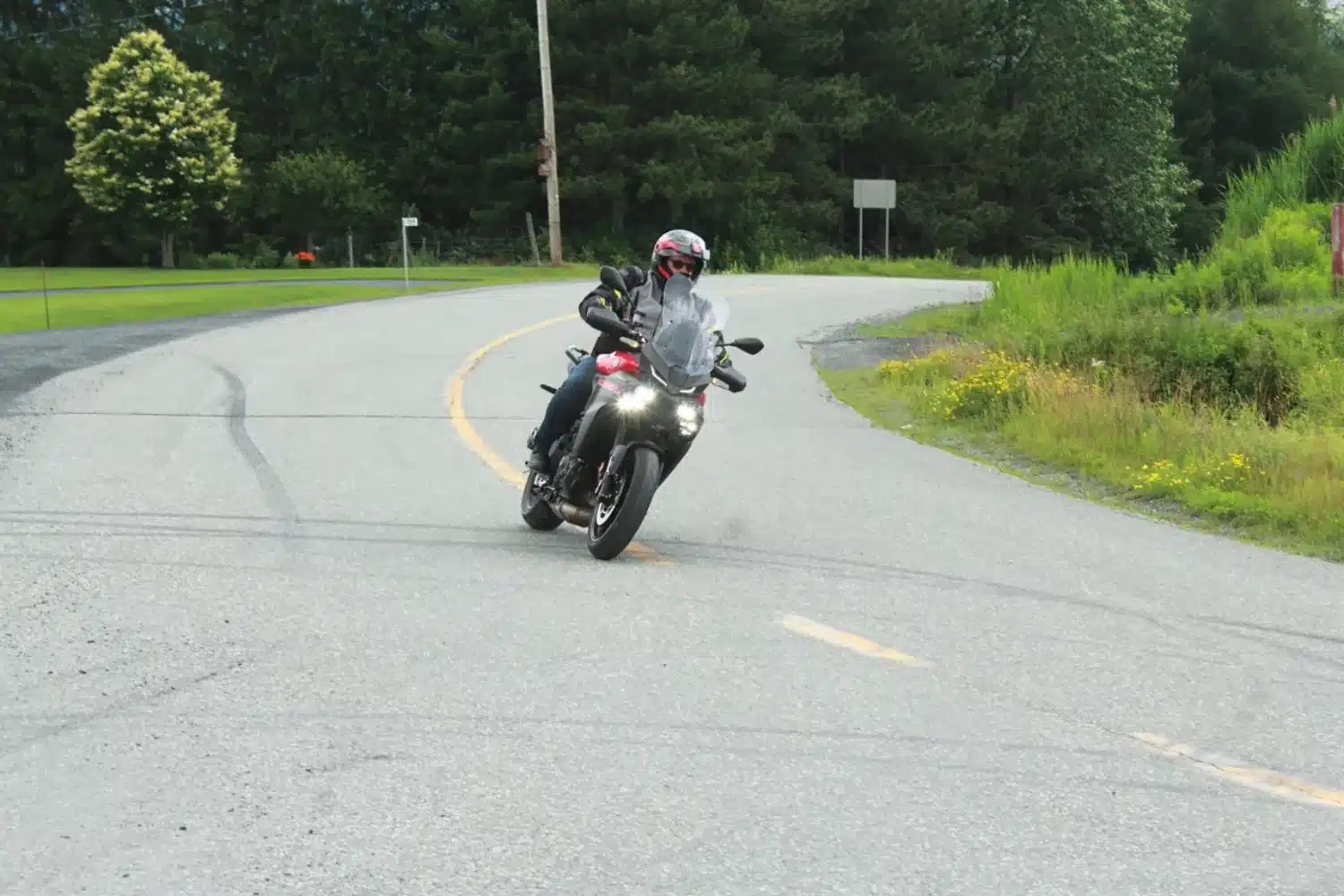
Price and availability
The 2025 Yamaha Tracer 9 Y-AMT is available from Canadian dealers now, in a single version (without the radar) and in two stylish colors. Expect a slightly lower price than last year – which, in the world of modern motorcycles, is almost a miracle. Sometimes, giving a little less means offering a little more.
So, shall we take a ride to Kamouraska?
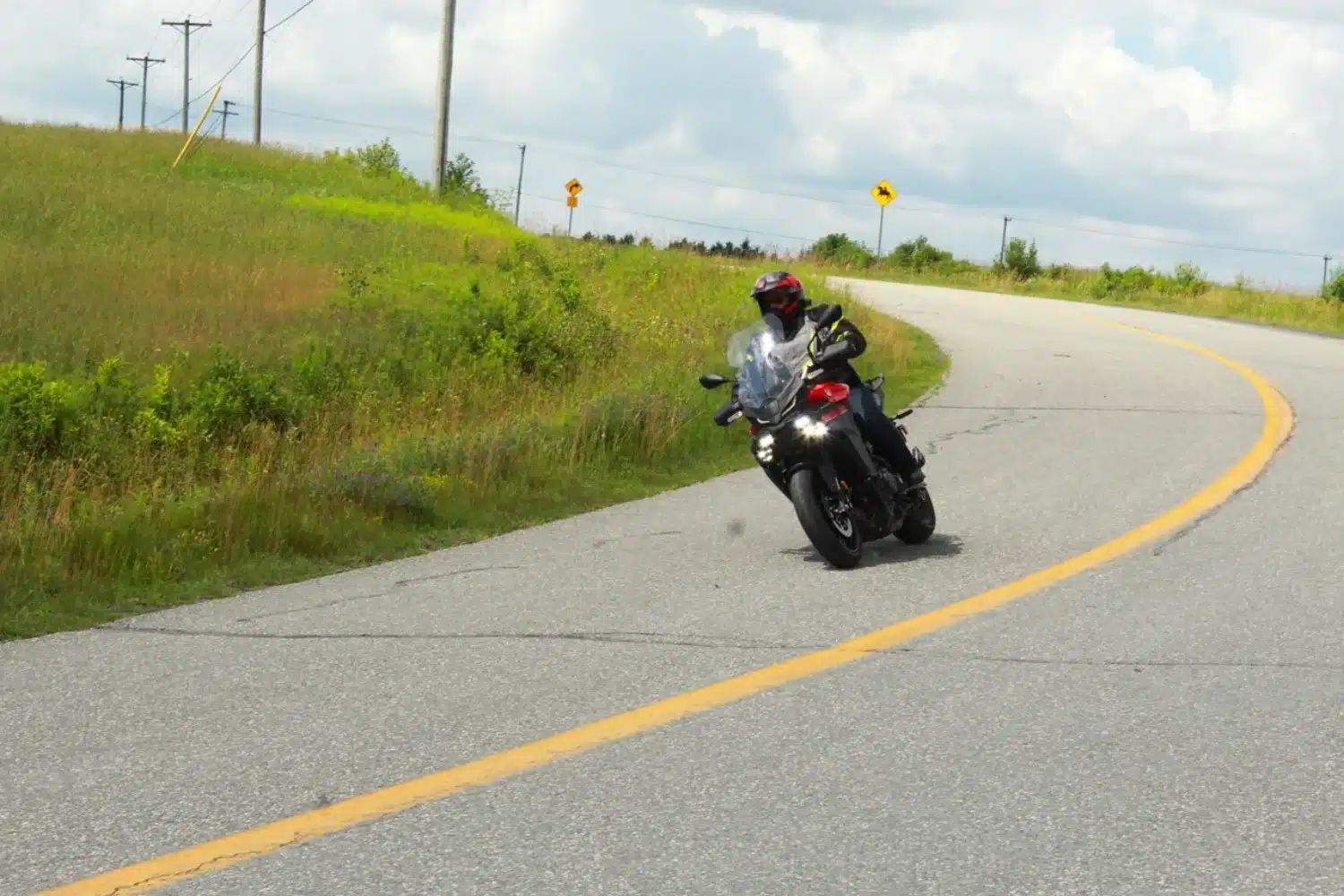
Equipment worn during this test:
- CKX Atlas helmet
- Oxford Montréal 4.0 coat
- Falco Liberty 3 boots
Thanks to Yamaha Canada for the loan of the bike that made this test possible.

